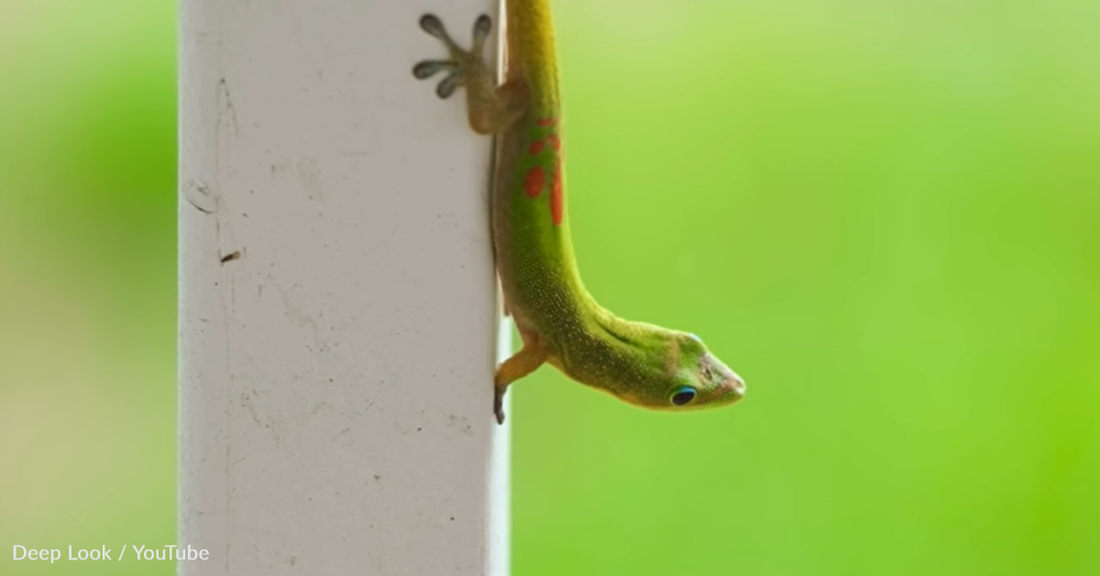How Geckos Use Molecular Physics To Scale Walls With Ease
Malorie Thompson
Have you ever wondered how geckos manage to climb up and over walls and trees without falling off? Even when they're vertical with the ground or upside down, their feet somehow manage to grip. But how?
Laura Klivans of the KQED series Deep Look created a whole video to answer this question.
 Photo: YouTube/Deep Look
Photo: YouTube/Deep Look
"Gecko feet aren't covered in suction cups or Velcro. They don't squirt glue, or leave any
footprints," the video's description reads. "Their secret is a herculean amount of grip -- at the atomic scale."
The description goes on to explain, "A gecko's toes are covered in tiny hairs that branch out into millions of microscopic, spatula-shaped pads. Those pads, called spatulae, get so close to the surfaces on which a gecko moves, the electrons of the spatulae and those on the surface start to sync up. That dance is called Van der Waals force,
and it's what gives geckos their sticking power."
 Photo: YouTube/Deep Look
Photo: YouTube/Deep Look
The video includes macro-photography of geckos spatulae pads. While they're hard to see with the human eye and certainly hard to see in real-time, you can really get a new perspective on geckos thanks to the photography.
The video notes that biophysics professor Kellar Autumn actually spend decades studying geckos feet. They said, "He's especially interested in how the physics of gecko adhesion can be applied across
disciplines, including in rate-and-state friction models used to predict seismic activity."
 Photo: YouTube/Deep Look
Photo: YouTube/Deep Look
Who would've thought we could use gecko feet for so much?
Check out the video below:


